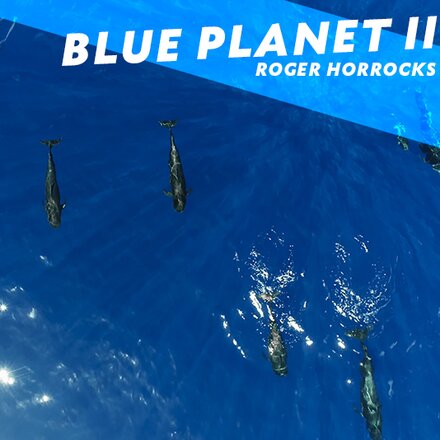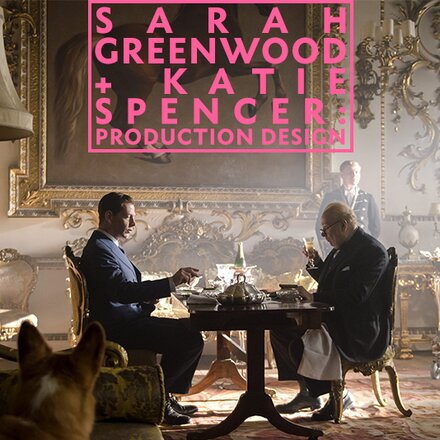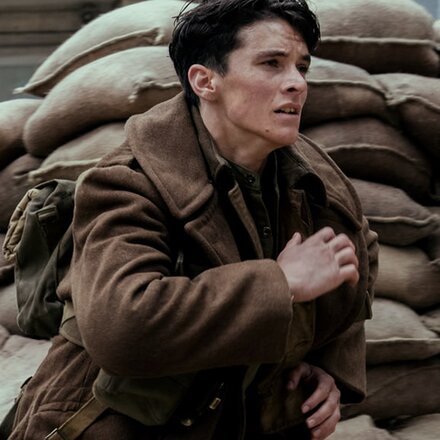Picture: SKYFALL © 2012 Danjaq, LLC, United Artists Corporation and Columbia Pictures Industries, Inc. All rights reserved.
Words by Quentin Falk.
Five of the seven BAFTA nominations earned by Roger Deakins to date have been for his remarkable work with the Coen Brothers. Three of those, for The Man Who Wasn’t There (2001), No Country for Old Men (2007) and True Grit (2010), have been converted into BAFTAs for Cinematography.
But this extraordinarily fruitful collaboration across more than 20 years and 11 films, tends to mask the fact that his craft has also distinguished many other fine, and often very popular films, on both sides of the Atlantic.
His global reputation now is such that he has now acquired almost legendary status. “For me,” purrs Denis Villeneuve, the Quebecois director of Deakins’ latest credit, Prisoners (2013), co-starring Hugh Jackman and Jake Gyllenhaal in a dark, sombre and suspenseful tale of child abduction, “this was a chance to fulfil one of my biggest dreams as a filmmaker: to work with a master cinematographer like Roger. He is one of my contemporary heroes.”
Skyfall (2012), currently the most successful British film of all time at the domestic box office, was Torquay-born Deakins’ third outing with British director Sam Mendes - following Jarhead (2005) and Revolutionary Road (2008). Not that the idea of adding his signature to the 007 franchise had ever held much sway with the down-to-earth 64-year-old.
“Frankly,” he says, “the only reason I did Skyfall was Sam. I haven’t ever done ‘action’ films, as such; the things I’ve done have been much more in the way of personal dramas. Was I surprised that Sam wanted to do it? Initially, yes. Then he came out to LA and we talked about it. At that point I really understood his passion for it. He was always a bigger fan of Bond movies than I was, but his enthusiasm and take on it were so interesting I thought, ‘how can I not do it?’
“It was only really when we’d finished it that I properly realised what a big deal it was. I never realised it was 50 years of Bond until the premiere. The thing for me about Skyfall was that Sam wanted to shoot it as a character-driven piece and not like the way most action films are shot. Yes, there were some big sequences and the odd multi-camera, but, by and large, it wasn’t a huge technical challenge.”
“I feel as if I am still learning all the time, too.”
Deakins reveals, astonishingly, that “the majority of the film was done single camera. Skyfall was the kind of film where you need to ‘prep’ because there were a lot of set-ups and big sets to light and figure, but, basically, Sam worked very much with the actors on the day to figure out each scene. Some of it was storyboarded but even storyboarded references weren’t plans we had to stick to.”
“I think the film really benefited from that kind of spontaneity. I t can be a bit scary when you’ve got a big-set up and a lot of action to do in a day and you don’t have an exact master plan. On the other hand, it does lead to things that are unexpected.”
Skyfall was Deakins’ first film back in the UK for nearly 20 years, since The Secret Garden in 1993.
A graduate in the 70s at the newly opened National Film School (the “And Television” bit was added later), Deakins first cut his teeth in documentaries and music videos. Before the Coens came calling, Deakins moved up to features with some of the most distinctive British films of the period like Another Time Another Place (1983), Sid and Nancy (1986), Defence of the Realm (1986) and Personal Services (1987).
“They’d [the Coens] seen some of the work I’d done and its variety. We hit it off straightaway on Barton Fink (1991). There is now an enormous amount of trust between us, and a proper understanding. It’s hard when you’re working with someone for the first time to gain their confidence, even if they like what you’ve done before. With the Coens, each film is very different and so it’s almost a new experience each time, and I feel as if I am still learning all the time, too.”
Punctuating his work with the Coens, and the trio with Mendes, have been many acclaimed assignments such as the ever–popular Shawshank Redemption (1994), Dead Man Walking (1995), A Beautiful Mind (2001), and, a personal favourite, Andrew Dominik’s The Assassination of Jesse James by The Coward Robert Ford (2007).
It is, perhaps inevitably, a Coen film which he draws on when asked about which scene he is most proud of: “It’s where the wife of the guy who runs the clothing shop comes at night to see Billy Bob Thornton [the eponymous Man Who Wasn’t There (2001)] and talks about how her husband was abducted by aliens. Her face is really dark and the shadow of the trees is moving over Billy Bob. I just thought that worked really well.”
As for which scene has been the hardest? That has to be the Underground train crash on Skyfall, he says.” We set up 11 cameras and every camera had something interesting. We had discussed doing it as a model and doing it CG [computer generated] but Sam preferred live wherever possible. Chris Corbould, our special effects supervisor, said, ‘I can do it!’ and we built it on the 007 stage at Pinewood. It was, of course, just one take and would have cost a fortune to do again. We were really happy with that.”
“Find your own way of seeing things, the way you want to show the world and make images.”
Deakins has shot his last three films digitally, including Skyfall, and his latest, Prisoners. Villeneuve, making his English-language debut with Prisoners, offers his own insight into Deakins’ process: “I wanted people to feel the rain and the dust surrounding the pain of these characters. To that end, Roger worked with as much natural, or practical, light as possible, employing slow camera movements to increase the tension. The darkness is so important in the film. The days are gloomy and overcast, and the nights, largely because of Roger’s work, are very poetic.”
Roger’s Top Tip: “The fundamental thing I tell any aspiring cinematographer is … stick to what you believe, find your own way of seeing things, the way you want to show the world and make images. People often asked, ‘how did I do this or that?’ and, for a while, I used to put up lighting diagrams. Then I realised this was the wrong thing to do because people were simply copying the way I did things. That’s not the way to do it at all. Above all, stick to your own guns.”
Roger’s Guru Pick - I would highly recommend the Coen Brother's interview. I found it fascinating as, in knowing them for well over 20 years, I have hardly ever heard them talk so much about their work!
Head over to Deakins's interactive website (www.rogerdeakins.com) to find out more, including his answers to further cinematography queries.
*Prisoners is now on general release in the UK






